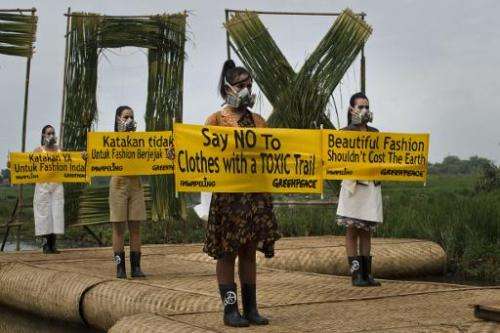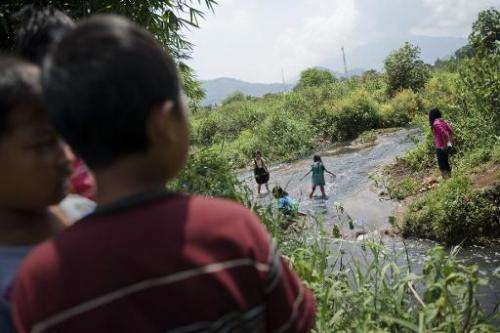Models in gas masks highlight Indonesian environmental devastation

Wearing gas masks and designer dresses, models paraded down a catwalk against a backdrop of polluted, rubbish-strewn paddy fields in central Indonesia, a colourful condemnation of the fashion industry's role in causing environmental devastation.
The women marched up and down in black rubber boots on a runway of wooden planks to dance music, brandishing banners that read "Say no to fashion with a toxic trail".
The show, put on by environmental group Greenpeace and local designers, was aimed at highlighting the destruction caused by textile factories, including many producing clothes for global brands, that have for years been spewing industrial waste into the country's waterways.
"Greenpeace urges the industry to stop polluting the environment with hazardous chemicals," said the group's campaigner Ahmad Ashov Birry, who was organising the show.
"We urge the government to take stern action against the polluters and strengthen regulations related to the management of hazardous chemicals for a toxic-free future."
Last week's show took place at Rancaekek, part of the Citarum River Basin on Java island, which is the heart of the Indonesian textile industry.
The area was named as one of the 10 most polluted places on Earth in 2013 by environmental groups the Blacksmith Institute and Green Cross Switzerland.
The groups found a wide range of toxins—including aluminium and manganese—in the river, which supplies much of the water to the capital Jakarta.

In Rancaekek alone, more than 1,200 hectares (3,000 acres) of paddy fields have been polluted, according to Greenpeace.
The show was part of a Greenpeace campaign called "Detox", which has been running since 2011 and is aimed at getting well-known brands to ensure that their suppliers do not release hazardous chemicals into the environment.
Big names such as Spain's Zara and Germany's Adidas have committed to the campaign.
Rivers and crops have been poisoned by pollution across the vast Indonesian archipelago by a wide range of industries, from manufacturing to mining.
More than 100 million Indonesians, out of a population of 250 million, have no access to safe water, according to Greenpeace.
© 2015 AFP



















